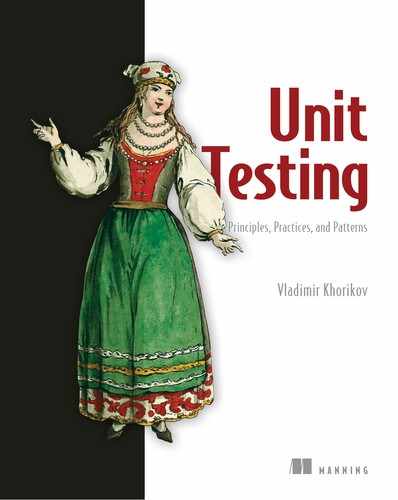List of Figures
Chapter 1. The goal of unit testing
Chapter 2. What is a unit test?
Chapter 3. The anatomy of a unit test
Chapter 4. The four pillars of a good unit test
Chapter 5. Mocks and test fragility
Figure 5.1. All variations of test doubles can be categorized into two types: mocks and stubs.
Figure 5.9. A hexagonal architecture is a set of interacting applications—hexagons.
Chapter 6. Styles of unit testing
Chapter 7. Refactoring toward valuable unit tests
Chapter 8. Why integration testing?
Chapter 9. Mocking best practices
Chapter 10. Testing the database
..................Content has been hidden....................
You can't read the all page of ebook, please click here login for view all page.
